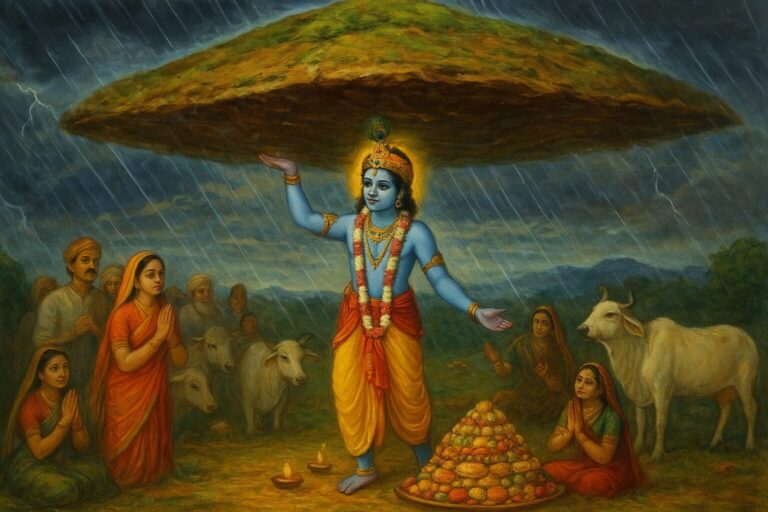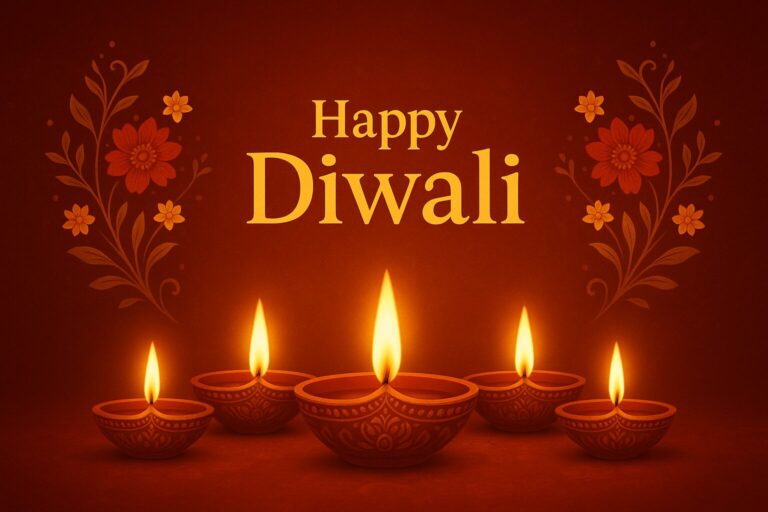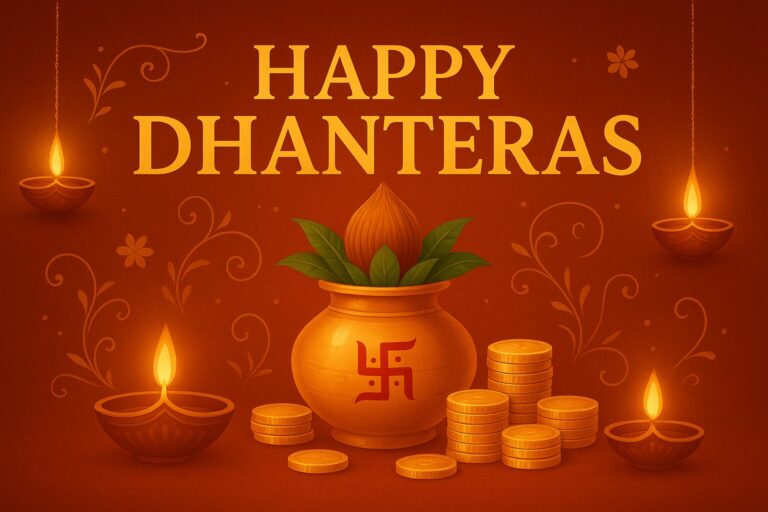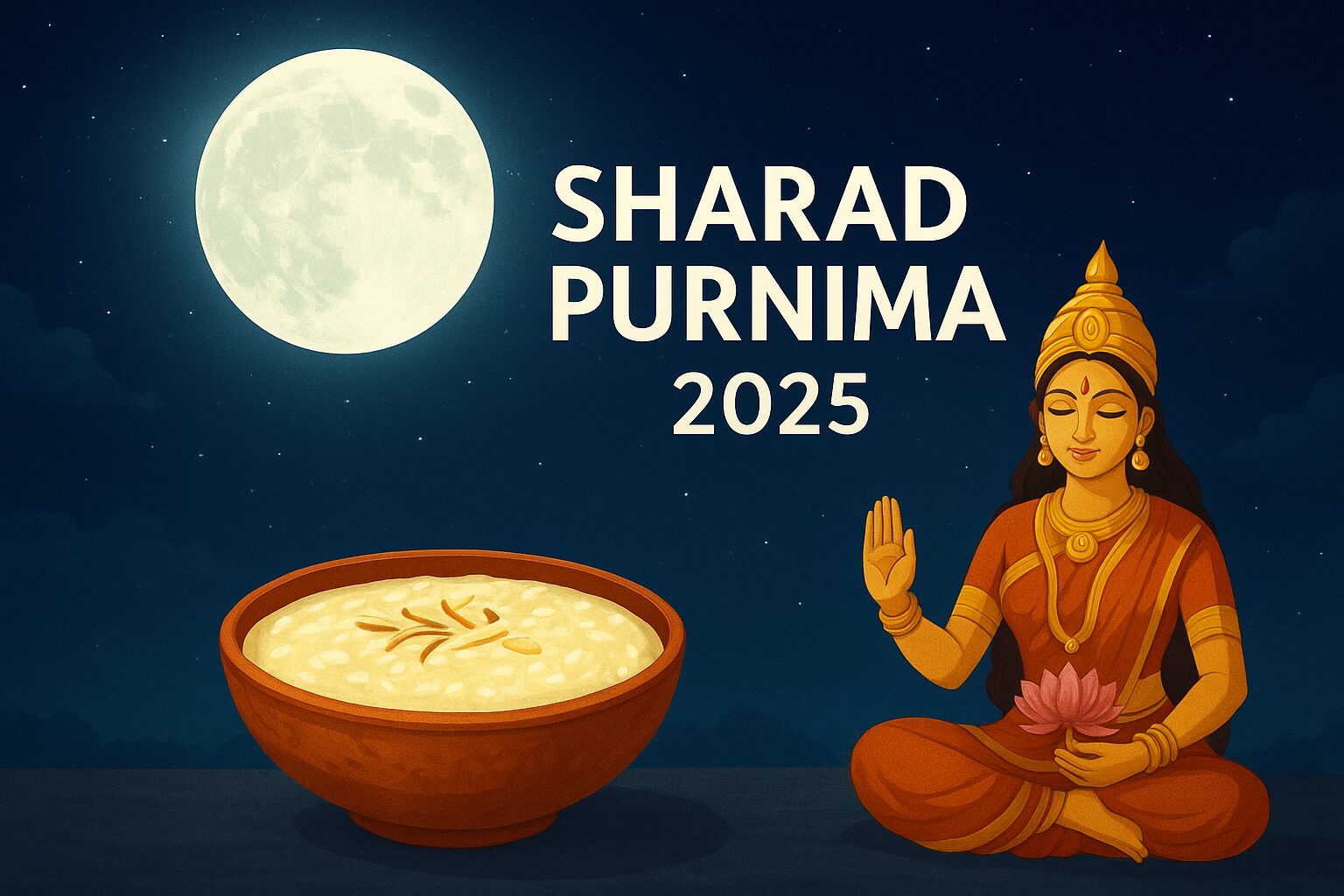
Sharad Purnima 2025- The Full Moon of Divine Light, Blessings, and Prosperity
Sharad Purnima, also known as Kojagiri Purnima, Raas Purnima, or Kumar Purnima, is one of the most spiritually powerful nights in Hindu culture. Falling on the full moon of the Ashwin month (September–October), this festival celebrates the beauty of the moon, the end of the monsoon season, and the arrival of a clear, peaceful autumn sky.
In 2025, Sharad Purnima will be celebrated on Monday, October 6, when the full moon is at its brightest. The night is regarded as the time when the moon showers divine nectar (Amrit) upon the Earth, enriching life with good health, prosperity, and spiritual purity.
It’s not merely a festival of rituals- it’s a celebration of light, healing, and divine connection between the human soul and cosmic energy.
Sharad Purnima 2025 Date and Tithi
- Festival Date: Monday, October 6, 2025
- Purnima Tithi Begins: 12:23 PM on October 6, 2025
- Purnima Tithi Ends: 9:16 AM on October 7, 2025
- Moonrise Time: Around 5:33 PM (local variations may occur)
The most auspicious period for observing fasts, performing puja, and keeping offerings under the moonlight will be the night of October 6.
Spiritual Meaning of Sharad Purnima
Sharad Purnima marks the fullness of the moon with all sixteen Kalas (divine attributes), symbolizing perfection, prosperity, and the completion of natural cycles. In Hindu philosophy, each Kala represents a special quality of human consciousness and divine energy.
The day signifies abundance and awakening– the time when nature’s rhythm aligns with human energy. The cool, silvery moonlight symbolizes peace and rejuvenation after the heavy, humid monsoon. Spiritually, it reminds devotees to calm their minds, embrace gratitude, and welcome prosperity through purity and prayer.
It is also believed that Goddess Lakshmi, the deity of wealth and well-being, descends to Earth on this night, asking, “Ko jagarti?” (Who is awake?). Those who remain awake in devotion are blessed with her divine grace.
Mythological Legends of Sharad Purnima
1. The Divine Raas Leela of Lord Krishna
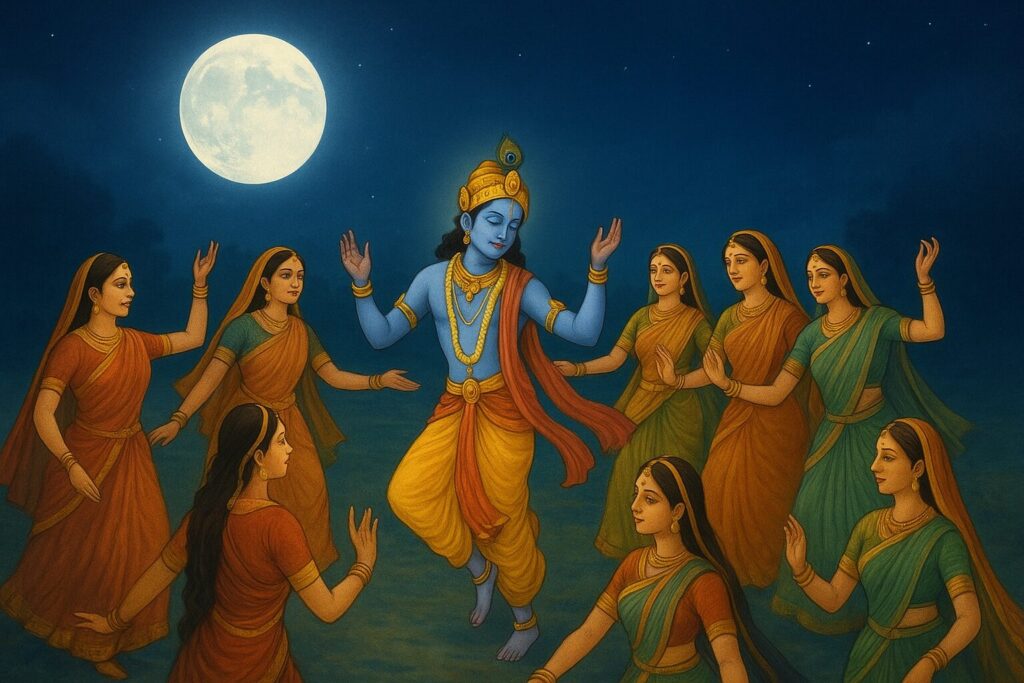
The most celebrated legend of Sharad Purnima belongs to Lord Krishna and the Gopis of Vrindavan. On this radiant night, Krishna played his flute, and the mesmerizing sound drew every Gopi out of her home, forgetting all worldly bonds. Under the full moon, the Lord performed the Maha Raas Leela, dancing with each Gopi simultaneously, filling their hearts with blissful divine love. This symbolizes the soul’s eternal longing for union with God, where devotion replaces attachment and love transcends all boundaries. The festival thus becomes a celebration of divine love and spiritual fulfillment.
2. The Kojagiri Night of Goddess Lakshmi
Another sacred legend tells that Goddess Lakshmi, the goddess of wealth, roams the Earth on this night. She visits every home, calling out, “Ko jagarti?” meaning “Who is awake?” She blesses those who stay awake with purity, devotion, and prosperity. Hence, devotees light lamps, decorate their homes, and spend the night chanting, praying, and meditating- inviting abundance and peace into their lives.
3. The Story of the Blessed Kheer
It is said that the moonlight on Sharad Purnima possesses curative and divine energy. To absorb this energy, devotees prepare kheer (a rice and milk pudding) and keep it under the open sky all night. By morning, it is believed that the moonlight has filled the kheer with divine healing power. This “Amrit kheer” is distributed as Prasad, symbolizing nourishment, harmony, and blessings of health.
Rituals and Customs of Sharad Purnima 2025
1. Early Morning Preparations
The day begins with a sacred bath and purification of the home and puja area. Devotees install idols or images of Goddess Lakshmi, Lord Vishnu, or Lord Krishna, decorate the space with flowers, and light diyas or lamps symbolizing divine presence.
2. Sharad Purnima Vrat (Fasting)
- Devotees observe a full or partial fast throughout the day.
- Some prefer a nirjala vrat (without food or water), while others take fruits, milk, or light satvik meals.
- The fast is broken at night, after performing the Chandra Puja and consuming moon-blessed kheer or milk.
3. Chandra Puja (Moon Worship)
- The full moon is worshipped with offerings of water, white flowers, rice, and sandalwood.
- Devotees chant mantras like:
“Om Chandraya Namah” or “Om Som Somaya Namah” - The moon is believed to represent peace, emotion, and healing. Worshipping it helps balance one’s mental and emotional state.
4. Lakshmi Puja and Jagran
- The night is dedicated to Goddess Lakshmi. Homes are cleaned and lit with lamps to invite her energy of prosperity.
- Many families stay awake all night (Jagran), singing devotional songs, chanting prayers, and sharing stories of divine love.
- It is believed that the more one stays awake and prays, the more blessings are received.
5. Kheer Ritual
- Milk is boiled until it thickens, and rice, sugar, and cardamom are added.
- The kheer is kept under the open moonlight in silver or clay vessels.
- It is covered lightly with a fine cloth to allow moon rays to touch the dish.
- The next morning, this kheer is distributed among family and neighbors as divine Prasad.
6. Charity and Giving
The essence of Sharad Purnima lies in sharing and compassion. Donating clothes, food, and money to the poor is considered the purest act of the night.
It reflects the spiritual truth- that wealth increases when shared with others.

Regional Variations Across India
Gujarat and Bihar:
People prepare sweets, kheer, and masala milk, and spend the night in devotion, welcoming Goddess Lakshmi with open hearts.
North India:
Devotees observe fasts and perform Lakshmi and Chandra Puja. In Mathura and Vrindavan, Raas Leela performances recreate the divine dance of Krishna.
Maharashtra:
Known as Kojagiri Purnima, families gather on terraces, drink masala milk under the moonlight, and enjoy music and bhajans.
Odisha:
Celebrated as Kumar Purnima, unmarried girls worship the moon and pray for ideal life partners.
Bengal and Assam:
The day is observed as Kojagiri Lakshmi Puja– homes are beautifully decorated and filled with chanting of mantras.
Ayurvedic and Scientific Importance of Sharad Purnima
According to Ayurveda, Sharad Purnima marks a change in nature’s rhythm. The monsoon humidity fades, and the air becomes crisp and pure. The moonlight, rich in cooling and calming properties, helps balance the Pitta dosha (body heat).
From a scientific viewpoint, the October full moon is the brightest of the year. The moonlight’s soothing quality helps the body relax and the mind attain peace. Sitting or meditating under the moon on this night is said to reduce stress and enhance emotional well-being.
The Symbolism of Light and Abundance
Sharad Purnima celebrates the light of consciousness and divine love. The full moon symbolizes completeness- reminding us that just as the moon shines fully when free of clouds, we too can shine when our hearts are clear of ego and negativity.
It teaches us gratitude, humility, and the joy of sharing. Staying awake under the moonlight is symbolic of staying conscious in life- awake to truth, compassion, and self-awareness.
In today’s fast-paced life, Sharad Purnima holds special meaning. It encourages people to pause, reconnect with nature, and purify their thoughts. Keeping away from screens, spending the night under the sky, meditating, and practicing gratitude can recharge our emotional and spiritual health.
The simple act of offering prayers, helping others, and celebrating together with family brings inner peace and strengthens bonds.
Conclusion
Sharad Purnima 2025 is not just a festival; it’s a celestial experience of divine energy and human devotion. Whether you celebrate it as Kojagiri Purnima, Raas Purnima, or Kumar Purnima, the message remains the same – to awaken, to love, and to live in harmony.
As the full moon shines in its pure brilliance on October 6, 2025, may its light illuminate our hearts, remove darkness, and fill our lives with health, wealth, and happiness.
Also read: Valmiki Jayanti 2025- Life, Teachings, and Celebration

